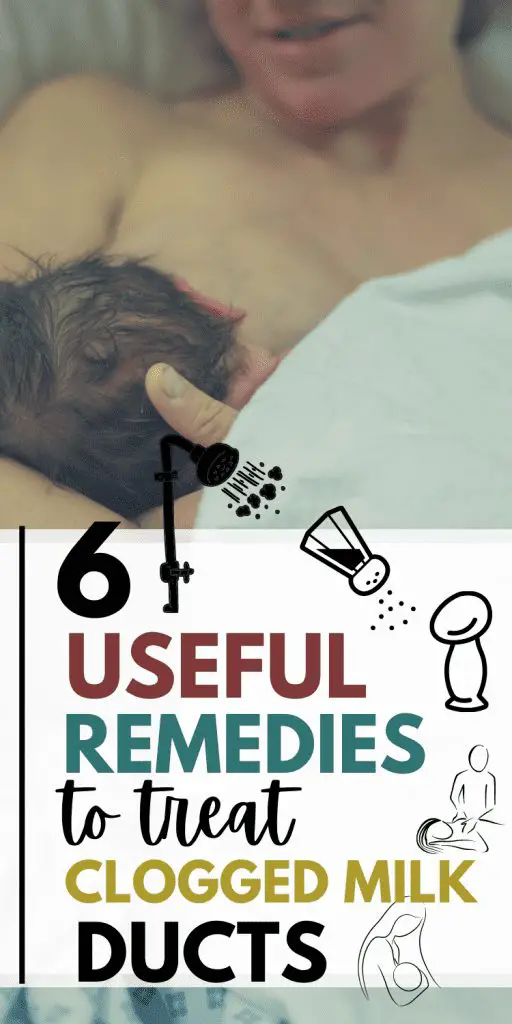Once you start to breastfeed, you get to terms with all of its eras, like breastfeeding benefits for the mother & the baby. Breastfeeding doesn’t come easy, it conjures you with engorgement, a clogged milk duct, mastitis, low milk supply, etc.
Every new mom needs to know what is clogged ducts. Why popping clogged milk duct coming out? Will a clogged duct eventually dry up or not? What are the main symptoms of clogged ducts breast?
Despite the fear in mothers, these symptoms and breastfeeding problems can be easily evaluated and resolved. To begin with, Clogged duct supply, for example, is often treated manually, it is also self-diagnosed and self-treated.
Let us get started.
What Is Clogged Ducts?

WHO suggests breastfeeding exclusively for 6 months. Exclusive breastfeeding has unending benefits for the mother and the baby but it also has complications and clogged ducts breast popping can be noticed at a very early stage of breastfeeding.
Bleb Bleb-clogged milk duct popping in the breast’s surface where there’s an obstruction in the milk flow. These can be noticed as early as in the hospital. A clogged duct is a result of an improper latch, improper drainage, and other causes that we will discuss further.
This accumulation of milk behind the blockage can discomfort you and disturb your peaceful breastfeeding session. Clogged milk duct pain is hard to digest. You can especially notice swelling, inflammation, and itchiness.
Symptoms Of A Breast Clogged Duct
When a milk duct in your breast gets blocked or doesn’t drain well, it can cause clogged or plugged milk ducts.
This might happen if your breast isn’t fully emptied after feeding, maybe your baby misses a feed, or if you’re stressed. Here are some signs you might have a clogged milk duct.
- Pain in specific areas of the breasts.
- Frequently, lumps are evident.
- Swelling & Inflammation
- Not a smooth milk flow.
- Milk blebs or milk blisters on the nipple.
- Movement of the lump in time
If you notice fever caused by these clogged milk ducts, it could be a breast infection, you should visit your doctor as a top priority.
What Causes Clogged Breast Duct Popping?

These symptoms appear in mothers who recently started to breastfeed or have to stop breastfeeding recently.
- First, improper/insufficient drainage.
- Oversupply. Too much pumping can lead to oversupply.
- Weak Latch
- Improper Breastfeeding position
- A recent change in the feeding pattern
- An irregular breastfeeding schedule.
- Not breastfeeding on demand
- Tight Bras or clothes.
What does a clogged boob duct look like?
Externally, a clogged breast duct smay present with symptoms such as localized pain, redness, swelling, and a firm lump in the breast. However, these symptoms are more indicative of a clogged duct rather than a visible physical appearance.
What does a clogged duct feel like?
Here’s a concise version of how a clogged milk duct may feel:
- Pain or discomfort in a specific area of the breast.
- Tenderness or sensitivity to touch.
- A feeling of fullness or heaviness in the breast.
- Presence of a firm lump or knot in the breast.
- Warmth or heat in the affected area.
- Decreased milk flow from the affected breast.
- Engorgement or a feeling of excessive fullness in the breast.
How These Can Become More Serious and Painful?
If you don’t do anything about a clogged milk duct, it might turn into a more serious problem called mastitis, which is an infection. Unlike a clogged duct, mastitis can cause a fever, along with other symptoms like:
-
- A fever of 101°F (38.3°C) or higher.
- Feeling like you have the flu with chills and body aches.
- The whole breast feels warm, swollen, and tender.
- Having a lump or thicker breast tissue.
- Feeling a burning sensation or discomfort while breastfeeding or pumping.
- Redness on the skin where it’s affected, which might look like a wedge shape.
Natural Milk Duct Clog Treatment!

With or without treatment, milk clogged in breast is usually relieved away in a day or 2 but it’s not necessary to endure the pain. You can try these home remedies to free your clogged ducts.
- Pump your breasts to express the extra leftover milk. Often power pumping can stimulate your body to produce extra milk that is of no use unless you are building up milk stashes.
- Haakaa pump allows you to express the extra milk without emptying the complete breasts. It works on suction, you can just attach the pump to your breasts and will do the work for you.
- A warm shower or heating pad can release the tension buildup in your breasts. Use a warm compressor to restart the flow.
- Soak the breast in warm water and Epsom salt. You can either use a container or a Haakaa pump. Warm water and Epsom salt have anti-inflammatory qualities. They also help in reducing pain & swelling.
- Massaging the duct with gravity. Massage these ducts in the motion they flow. Start from the shoulders, the breast, and then the nipples, in this manner.
- Use gravity to ease off the pain. Whenever feeding or pumping, position yourself so that gravity works upon your shoulder.
If the pain and clogged ducts persist, it might lead to breast infection or mastitis. There are no home remedies for mastitis. Visit your doctor ASAP.
How To Prevent Plugged Duct in Breast?
Nipple clogged milk duct hurts. The most simple way to avoid clogged milk ducts is to always keep your breasts close to empty with proper drainage.
- Often take warm showers and massage your breasts once in a while.
- Wear loose clothes and nursing bras.
- Use a Haakaa pump to always express the leftover milk and never ignore a full breast for a longer time. If your baby is unable to empty your breasts, always express the extra milk.
- Provided that, check your latch. If your baby is full and has many dirty diapers a day, your latch is probably right but if your latch is not correct, it may lead to low milk supply, engorgement, and many other issues. Look for the signs of low milk supply to get a hint about your latch.
- Also, breastfeeding positions are important. Check if your position allows you a good latch and comfort. You can always consult a lactational specialist and learn how to latch properly. An improper latch is evident in mothers new to breastfeeding. With time, you can master breastfeeding.
- Breastfeeding on demand will also help you empty your breasts more often than a scheduled session. Avoid scheduling your breastfeeding session, at least for 6 months.
Some signs that your breast is empty:
- Certainly, your Breast feels light.
- You don’t notice any extra letdown or milk drops after squeezing the breast.
To emphasize, mothers with over milk supply are at greater risk of clogged ducts. You can use the extra milk to prepare milk stashes for when you start to wean or you always have the option to feed other babies in need of breastfeeding.
End Point: Here’s all you need to learn about clogged milk ducts, their symptoms, and how to prevent and treat them. Share these articles with your family & friends and show some support.
Pin it on Pinterest using the graphics below.

How To Massage Clogged Milk Duct?
Clogged milk duct massage is necessary because it can help to alleviate the blockage and improve milk flow. Here’s why it is beneficial:
You can follow these steps to massage for clogged milk duct
-
Apply warmth: Start by applying a warm compress or taking a warm shower. The heat helps to relax the breast tissue and improve milk flow.
-
Positioning: Find a comfortable and relaxing position to perform the massage. You can sit in a comfortable chair or lie down on your back.
-
Gentle pressure: Place your fingertips on the affected area of the breast. Apply gentle pressure toward the nipple, moving in a circular motion. Start from the outer edges of the breast and gradually move towards the nipple. This helps to loosen the clog and improve milk flow.
-
Vary the pressure: While massaging, you can experiment with different pressures. Some women find that gentle pressure works best, while others may require slightly firmer pressure. Listen to your body and adjust the pressure based on what feels most comfortable and effective for you.
-
Combine with breastfeeding: Massage the breast while breastfeeding or immediately before or after a feeding. The suction and stimulation from your baby can further help to clear the clog.
-
Hand expression: If the clog persists, you can try hand-expressing milk from the affected breast after massaging. Gently squeeze the breast with your hand, starting behind the clog and working towards the nipple. This can help to express any trapped milk and relieve the blockage.
How are these tips helpful in breastfeeding clogged duct possible?
Here’s a concise version of the steps to clear breastfeeding and clogged ducts:
- Keep breastfeeding/pumping regularly.
- Ensure proper positioning and latch.
- Massage the affected breast in circular motions.
- Apply a warm compress before feeding.
- Try different breastfeeding positions.
- Nurse on all fours (leaning forward).
- Consider using a breast pump to express milk.
- Apply a cold compress after feeding/pumping.
- Take care of your overall well-being.
Can Epsom Salt clear clog milk duct nipple?
There is no scientific evidence or commonly accepted recommendation for clogged milk ducts Epsom salt specifically to clear ducts. Epsom salt is primarily used for external purposes, such as in baths to help relax muscles or soothe skin conditions.
Is there any substitute for Epsom salt for clogged duct in breast?
While Epsom salt is not typically used for treating clogged milk ducts, there are alternative methods that you can try to help alleviate the blockage. Here are a few options: such as warm compresses, gentle massage, frequent breastfeeding or pumping, and maintaining a proper breastfeeding routine.
Sleeping with a clogged milk duct is possible?
Yes, it is possible to sleep with a clogged milk duct. Sleeping with a clogged milk duct is possible, but it may cause discomfort and potentially exacerbate the blockage.
The clogged duct can cause pain, tenderness, and swelling in the affected breast, which can make it uncomfortable to find a suitable sleeping position. Additionally, pressure from lying on the affected breast can further compress the duct and impede milk flow.
It is generally recommended to address the clogged duct before sleeping by using techniques such as warm compresses, gentle massage, or breastfeeding/pumping to help alleviate the blockage and promote better milk flow.
Essential Oils For Clogged Milk Duct
Here are a few essential oils that are helpful during breastfeeding and helpful to deal with breastfeeding problems.
- Lavender Essential Oil
- Geranium Essential Oil
- Tea Tree Oil
How to clear a clogged duct breastfeeding with haakaa?
Below are the best ways to clear clogged breast duct breastfeeding with haakaa no Epsom salt:
- Apply a warm compress to the affected breast.
- Gently massage the area around the clogged duct in circular motions.
- Position the Haakaa breast pump on your breast, ensuring a tight seal.
- Apply gentle suction with the Haakaa for 10-15 minutes.
- Massage the affected area while pumping.
- Take a hot shower, directing warm water to the breast and massaging.
- Apply a cold compress or cold pack to reduce swelling.
- Nurse or pump frequently to prevent future clogs.
End Note
In conclusion, if you’re dealing with a clogged milk duct, remember to nurse or pump frequently, apply warm compresses, massage the affected area, and seek medical advice if the issue persists or worsens. Take care of yourself and prioritize your well-being during this time.
